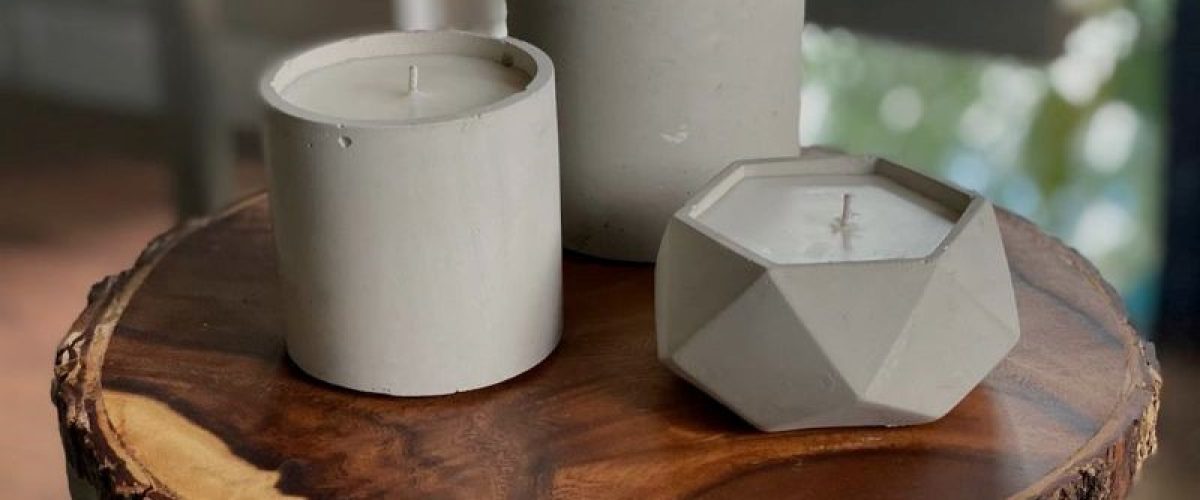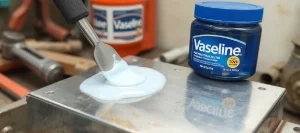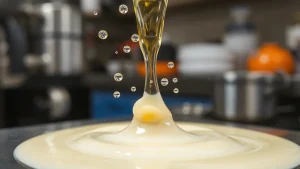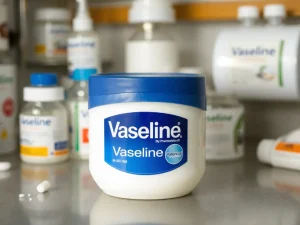شاید این ماده برای شما هم مورد استفاده باشد و بخواهید در مورد آن بیشتر بدانید پس با ما همراه باشید. انواع پارافین چیست و تفاوت پارافین ۱درصد و ۳ درصد چیست؟ پارافین از نفت یا زغال سنگ در صنعت پتروشیمی استخراج میشود و یک ترکیب هیدروکربنی اشباع است که در آن تمام اتمهای کربن موجود در آن توسط پیوندهای ساده به یکدیگر متصل میشوند و پارافین را تشکیل میدهند. در این مطلب به تفاوت پارافین ۱درصد با پارافین ۳درصد میپردازیم.
پارافین یا هیدروکربنهای پارافینی آلکان نامیده میشوند. به عبارت دیگر، خاصیت این مواد این است که اتمهای کربن با پیوندهای ساده متصل میشوند و بقیه پیوندها از اتمهای هیدروژن اشباع میشوند.
پارافین چیست؟
به طور خلاصه میتوان پارافین را به عنوان یک ماده نفتی توصیف کرد که به دو صورت مایع یا جامد در بازار یافت میشود. پارافین جامد حالت ژل دارد و گاهی اوقات به عنوان موم پارافین نیز شناخته میشود.
در واقع، هر زمان که از موم پارافین صحبت میکنیم، معنای اصلی پارافین جامد است. از پارافین خوراکی میتوان در درمان بسیاری از بیماریها و استفاده در صنعت پزشکی مانند عکس گرفتن از بدن مورد استفاده قرار داد. در صنعت نیز از پارافین به جای روان کنندهها و در صنایع بهداشتی در انواع کرمها و ضدآفتابها استفاده میشود.
موم پارافین عمدتاً به صورت مومی سفید، بیبو و بیمزه با نقطه ذوب معمولی بین ۴۶ تا ۶۸ درجه سانتیگراد (۱۱۵ تا ۱۵۴ درجه فارنهایت) و چگالی حدود ۹۰۰ کیلوگرم بر متر مکعب وجود دارد. پارافین در آب محلول نیست، اما در حلالهایی مانند اتر، بنزن و برخی استرها محلول است.
تفاوت پارافین ۱درصد و ۳درصد
دقت داشته باشید که هنگام خرید پارافین باید به نکات مختلفی توجه کرد که یکی از مهمترین آنها رنگ، سختی و درصد چربی آن است. این اقلام میتوانند تاثیر بسیار زیادی در قیمت پارافین داشته باشند. به عنوان مثال قیمت پارافین با ۱ درصد چربی از نمونههای ۳ و ۵ درصد آن بیشتر است پس تفاوت پارافینها میتواند در درصد چربی آنها باشد.
به طور کلی پارافینهای روغنی ۱.۳ و ۵ درصد دارای نقطه ذوب، نقطه انجماد، رنگ و نقطه نرم شدن متفاوتی هستند. هم چنین هر چه مقدار روغن پارافین کمتر باشد رنگ آن به سفید نزدیکتر است. پس حتما برای خرید تفاوت پارافین و انواع آن را در نظر داشته باشید.
کاربردهای پارافین
جالب است بدانید که این ماده را در هر جای زندگی میتوان مشاهده کرد از صنعت آرایشی و بهداشتی گرفته تا صنعت مواد غذایی پارافین مورد استفاده است. پس با ما باشید تا شما را با کاربردهای پارافین بیشتر آشنا کنیم. موارد استفاده پارافین عبارتند از:
ساخت شمع
پوشش برای کاغذ مومی
وجود پارافین در شمع باعث کاهش سرعت ذوب شمع میشود و ساخت و تولید آن نسبت به سایر شمعها ارزانتر است.
صنعت آرایشی و بهداشتی
ساخت انواع مداد ابرو
ساخت مداد رنگی
تولید موم برای اهداف زیبایی و درمانی
مرطوب کنندههای موجود در لوازم آرایشی مانند وازلین
ساخت روان کنندهها (روان کنندهها موادی هستند که برای کاهش اصطکاک بین سطوح متحرک استفاده میشوند و حرکت آنها را با یکدیگر آسانتر و روانتر از حد معمول میکنند)
صنایع غذایی
رنگهای متنوع و زیبا که در تهیه شیرینیها استفاده میشود و قابل خوردن هستند.
پوشش برای پنیرهای سفت مانند پنیر ادام
مهر و موم بسیاری از قوطیها و بطریها
آنتی اوزونانت (ضد اوزون): مخلوطی از پارافین و مواد دیگر که در ترکیبات لاستیکی برای جلوگیری از ترک خوردن لاستیک استفاده میشود.
عامل ضد کپک زدگی در رطوبت و ضد گرد و غبار
ترکیبات موم موجی (موج دار) که برای حذف بینظمیهای سطحی استفاده میشود.
سوخت جامد برای موتورهای موشک چند سوختی
صنایع ریختهگری
برای ریلها و شکافهای بتنی استفاده میشود.
چاپ صفحه
از اکسید شدن سطوح فولادی و آهنی صیقلی میتواند جلوگیری کند.
محرک مکانیکی و ترموستات به عنوان یک دستگاه باز کننده
میکروفونیک پیکاپهای گیتار را کاهش میدهد.
مخلوط موم مورد استفاده برای تخته اسکی
یک عامل ضخیم کننده برای بسیاری از پینت بالهای مورد استفاده با کرایولا
کاهش انحراف در صنعت سیمان
جوهر برای چاپگرهای حرارتی
تاریخچه تولید و استفاده پارافین
جالب است بدانید که موم پارافین اولین بار در دهه ۱۸۳۰ توسط شیمیدانی آلمانی کشف شد. او سعی کرد دستگاهی بسازد که بتوان از آن برای تجزیه و تصفیه مواد مومی شکلی که به طور طبیعی در روغن وجود دارد استفاده کرد.
در همین حین او به طور اتفاقی موفق شد تا پارافین را کشف کند. پارافین یک پیشرفت بزرگ در صنعت شمعسازی است زیرا تمیز و با کیفیت کار میکند و نسبت به سایر مواد اولیه شمع ارزانتر است و صرفه اقتصادی نیز دارد. حتما به تفاوت پارافین و انواع آن نیز دقت داشته باشید.
پارافین در ابتدا نقطه ذوب پایینی دارد اما بعداً با افزودن اسید استئاریک سخت میشود و این عیب آن برطرف میشود. تولید پارافین در اوایل قرن بیستم به دلیل توسعه صنعت بستهبندی گوشت و چربی افزایش یافت که به دنبال آن تولید اسید استئاریک نیز افزایش یافت.
نحوه تولید پارافین
دقت داشته باشید که ماده اولیه برای تولید پارافین، موم شل است که شامل مخلوطی از روغن و موم است. اولین مرحله در ساخت موم پارافین، چربیزدایی یا مومزدایی (حذف روغن) از موم شل است.
روغن با روش کریستالیزاسیون جدا میشود. معمولاً موم سست حرارت داده میشود، سپس با یک یا چند حلال مانند کتون مخلوط شده و سرد میشود. بعد از این که خنک شد، موم از محلول متبلور میشود و فقط روغن باقی میماند.
این مخلوط به دو قسمت جامد و مایع تقسیم میشود که به قسمت جامد (موم به اضافه مقداری حلال) و به قسمت مایع (روغن و حلال) فیلتر میشود. پس از بازیابی حلال توسط فرآیند تقطیر، محصول حاصل را موم محصول (موم فشرده) مینامند.
هر چه درصد روغن موجود در موم کمتر باشد، تصفیه آن طولانیتر خواهد بود و زمان بیشتری نیاز دارد. برخی از محصولات مومی برای از بین بردن رنگ و بو نیاز به فرآوری بیشتری دارند.
در نهایت، موم را میتوان برای دستیابی به خواص مطلوب مانند نقطه ذوب و نفوذ مخلوط کرد. تفاوت پارافینها با یکدیگر میتواند در شکل آنها باشد برای مثال موم پارافین به صورت مایع و جامد به فروش میرسد.
امروزه با گسترش پارافین روشی نوین به نام پارافین تراپی مورد توجه مردم قرار گرفته است. پارافین تراپی یک روش درمان برای مشکلاتی مانند آرتریت و ترک خوردگی پوست است. در نتیجه اثر حرارتی این روش، فرآیندهای تبادل و تشکیل مواد فعال بیولوژیکی افزایش پیدا میکند.
در نتیجه در پارافین تراپی فرآیندهای بازسازی تحریک میشود و کار مویرگها بهبود پیدا میکند. گرمای پارافین به کاهش درد در مفاصل نیز کمک میکند و جریان خون را در ناحیه محل آن افزایش میدهد. در اثر گرما، آب زیادی از پوست خارج شده و لایه اپیدرم مرطوب میشود.
این روش برای کاهش اثرات پیری پوست مفید است. از مزایای آن میتوان به بازیابی توانایی پوست برای حفظ رطوبت، باز شدن منافذ، بهبود عرق و غدد چربی، افزایش گردش خون و آرامش اشاره کرد.
جمعبندی
پارافین یکی از پرتقاضاترین مواد شیمیایی صنعتی با توجه به کاربردهای آن در زمینههای مختلف میباشد. شرکتهای زیادی در زمینه خرید و فروش این متریال فعالیت میکنند اما حتما باید از یک شرکت معتبر خرید خود را انجام دهید تا محصولی با کیفیت و تضمینی تهیه کنید.
همچنین دقت داشته باشید که قیمت پارافین بستگی به حجم تقاضای مشتری و میزان استفاده قیمت متفاوتی دارد. نوع پارافین نیز در تعیین قیمت آن موثر است.







